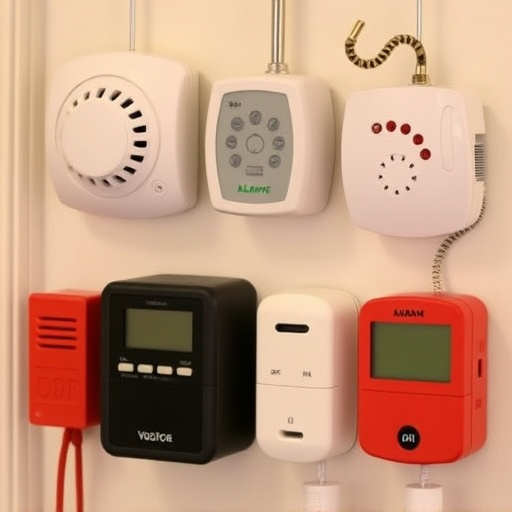Lone workers face unique hazards like isolation and delayed aid, making specialized safety equipment crucial. Personal Safety Sirens (PSS) with extended battery life provide reliability and quick responses during emergencies. PSS features such as automatic fall detection and GPS tracking enhance peace of mind for various work sectors. Choosing PSS involves prioritizing long-lasting batteries that withstand harsh conditions and offer prolonged power. Regular maintenance, clear communication protocols, and testing ensure optimal siren function and emergency response times, fostering a culture of preparedness for lone workers' well-being.
In today’s fast-paced world, an estimated 47% of workers operate alone, posing significant risks that often go unnoticed. This calls for robust safety alert systems, especially with devices like personal safety sirens proven to be game-changers in emergencies. This article delves into understanding the unique risks and needs of lone workers, focusing on the critical role of Personal Safety Sirens (PSS) and the importance of evaluating battery life in these emergency devices. We’ll also explore best practices for continuous protection.
- Understanding Lone Worker Risks and Needs
- The Role of Personal Safety Sirens
- Evaluating Battery Life in Emergency Devices
- Best Practices for Maintaining Continuous Protection
Understanding Lone Worker Risks and Needs
Lone workers face unique challenges that require specialized safety alert systems. Understanding their risks is crucial; these can include isolation, unexpected situations, and lack of immediate assistance. Each lone worker has distinct needs, making one-size-fits-all solutions ineffective. For instance, a construction worker’s concerns differ from those of a social worker or a farmer, necessitating tailored equipment.
A key consideration is the role of personal safety sirens with long battery life. These devices must be reliable and easily accessible, as they can be the lone worker’s only communication link to the outside world during emergencies. Advanced features like automatic fall detection, GPS tracking, and remote activation further enhance their utility, ensuring swift response times and peace of mind for both workers and employers.
The Role of Personal Safety Sirens
Personal Safety Sirens play a pivotal role in ensuring the well-being of lone workers, especially in remote or hazardous locations. These devices are designed to emit a loud, piercing alarm when activated, alerting nearby individuals or emergency services to an individual’s distress. The effectiveness of personal safety sirens lies in their ability to quickly draw attention and facilitate swift response times.
One critical aspect to consider is the Personal Safety Siren Battery Life. Long-lasting batteries are essential to ensure these devices remain operational during extended periods when lone workers might be out of direct communication with others. Advanced battery technologies, such as those utilizing lithium-ion or solar energy, offer prolonged runtime, enhancing the overall safety and reliability of the system.
Evaluating Battery Life in Emergency Devices
Choosing emergency devices for lone workers involves a careful consideration of various factors, with battery life being a crucial one. The reliability and longevity of a Personal Safety Siren’s battery can mean the difference between life and death in an emergency situation. Workers who are isolated or off-grid rely on these devices to signal for help when needed. Therefore, it’s essential to select sirens with robust batteries that can withstand harsh conditions and provide enough power for effective activation over extended periods without frequent recharging or replacement.
When evaluating battery life, pay close attention to the manufacturer’s specifications. Look for devices with high-capacity batteries designed for long-lasting performance. Consider operating temperatures and environmental factors that may impact battery drain. Some models offer advanced features like low-power modes or solar charging options to further extend battery life. Ensuring your lone workers have access to a reliable, long-lasting Personal Safety Siren battery is paramount for their safety and peace of mind.
Best Practices for Maintaining Continuous Protection
Maintaining continuous protection is paramount for lone worker safety alert systems. Regular maintenance checks are crucial, focusing on key components like the personal safety siren and its battery life. Ensuring the siren is fully charged, functioning correctly, and easily accessible can significantly enhance response times in an emergency. Similarly, keeping a spare battery handy guarantees uninterrupted protection, especially during extended work periods or remote locations where recharging might be impractical.
Best practices also involve establishing clear communication protocols. Regular testing of alert systems, documenting maintenance records, and ensuring all team members are trained to recognize and respond to the safety siren’s signals are essential steps. This proactive approach fosters a culture of preparedness, enabling quick action when the personal safety siren is activated, ultimately prioritizing the well-being of lone workers.
Lone workers face unique challenges, but with the right safety alert systems, such as personal safety sirens, these risks can be significantly mitigated. Understanding the specific needs of lone workers and implementing best practices for device maintenance is crucial. Ensuring adequate battery life in emergency devices is essential to provide continuous protection, enabling timely assistance during emergencies. By adopting these measures, we can foster a safer environment for those working alone.
